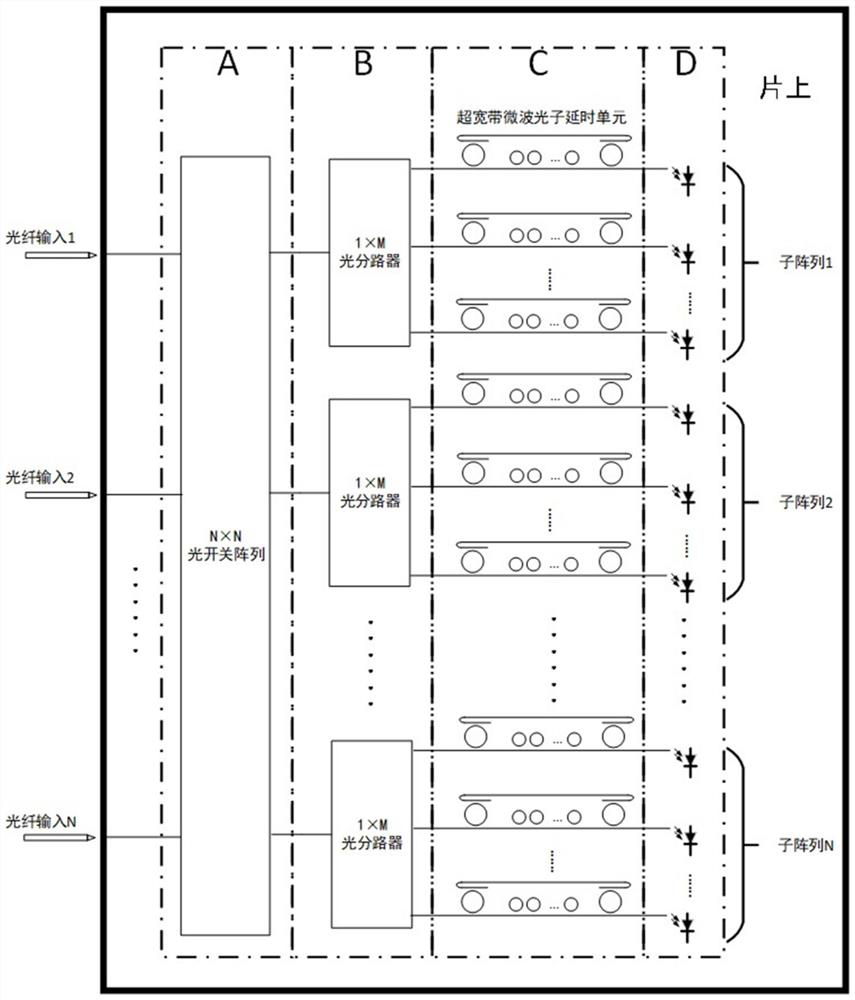A silicon-based reconfigurable microwave photonic multi-beamforming network chip
A technology of microwave photonics and network chips, applied in the direction of optical waveguide light guide, optics, light guide, etc., can solve the problems of poor flexibility and practicability, small adjustment accuracy, poor stability, etc., achieve simple structure and control, improve working bandwidth, and size small effect
- Summary
- Abstract
- Description
- Claims
- Application Information
AI Technical Summary
Problems solved by technology
Method used
Image
Examples
Embodiment Construction
[0033] The present invention realizes a silicon-based reconfigurable microwave photonic multi-beam forming network chip, the overall structure of which is as follows: figure 1 shown. figure 2 The illustrated embodiment is a specific embodiment of the present invention in the case of using a 4×4 optical switch array. The structure specifically includes a 4×4 optical switch array, 4 1×4 optical splitters, 16 ultra-wideband continuously adjustable optical true delay line arrays and 16 detector arrays; the input signals of the 4 fiber couplers are 4 The carrier wavelength of the channel is λ, and the modulation signal is a single-sideband modulated optical signal of the microwave signal to be transmitted. The output ends of the four fiber couplers are respectively connected with the four input ends of the 4×4 optical switch array. The four output ends of the ×4 optical switch array are respectively connected with the input ends of the four 1×4 optical splitters, and the output e...
PUM
 Login to View More
Login to View More Abstract
Description
Claims
Application Information
 Login to View More
Login to View More - R&D
- Intellectual Property
- Life Sciences
- Materials
- Tech Scout
- Unparalleled Data Quality
- Higher Quality Content
- 60% Fewer Hallucinations
Browse by: Latest US Patents, China's latest patents, Technical Efficacy Thesaurus, Application Domain, Technology Topic, Popular Technical Reports.
© 2025 PatSnap. All rights reserved.Legal|Privacy policy|Modern Slavery Act Transparency Statement|Sitemap|About US| Contact US: help@patsnap.com



